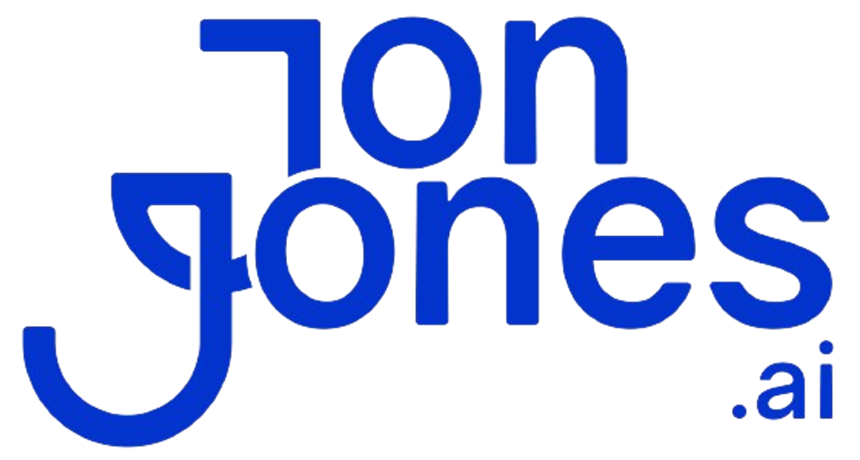Ever feel like your supply chain’s a dark maze you can’t navigate?
With AI-driven value chain mapping, we connect every step, from getting your materials at the loading dock to helping customers on the line, using machine learning (algorithms that learn patterns in your data) and IoT sensors (devices that stream live updates).
You’ll catch low-stock alerts before shelves run empty. You’ll spot production bottlenecks and watch delivery routes adjust themselves in real time.
No more guesswork.
Then we’ll walk you through five AI-powered moves to sharpen efficiency at each link of your chain.
AI-driven value chain mapping for industry analysis
We often feel like we’re flying blind in the supply chain, you know? AI-driven value chain mapping hooks up every link – from inbound logistics to customer service – using machine learning (algorithms that learn patterns) and IoT sensors (devices that collect real-time data). Now you get a single dashboard that shows potential issues before they turn into big headaches.
At inbound logistics, smart cameras and RFID tags track parts as they arrive. In operations, predictive algorithms flag bottlenecks on your production floor.
Outbound logistics runs on route-optimization engines that tweak delivery paths on the fly. Marketing and sales tap into analytics to spot shifts in demand. And your service team leans on chatbots powered by natural language processing (NLP) to speed up support.
| Stage | AI Boost |
|---|---|
| Inbound logistics | Sensor data spots low stock before it runs out |
| Operations | Dashboards light up with live machine stats |
| Outbound logistics | Shipment ETAs adjust in real time |
| Marketing & sales | Demand forecasts guide ad budgets |
| Service | AI chatbots and smart ticket routing cut response times |
This approach gives you end-to-end visibility across your supply chain. You’ll see inventory levels, what’s cooking on the line, where deliveries are at, and what customers are asking – all in one place. Since it’s live, alerts pop up the moment something goes off-script, like an overheated machine or a rerouted shipment.
Next, here’s the kicker: even though most companies will claim AI adoption by 2025, fewer than 15% of pilots deliver real business results. They skip mapping the entire chain and focus on point solutions. When you map out the whole chain, you uncover silent gaps – think customs hold-ups or marketing campaigns missing local trends – and then automate fixes across the board.
For more on frameworks and techniques, check out AI for industry analysis.
Applying machine learning and predictive analytics in industry value chain analysis

Machine learning (algorithms that learn patterns) helps us tune up your supply chain. We forecast demand and predict cost-to-serve (your total delivery costs). You’ll see how it all adds up in real operations.
When we forecast demand, we analyze your past sales, seasonality (regular ups and downs), and market signals. That way, you only stock what you really need. No more guessing how many widgets to build.
Then we crunch transportation, warehousing, and tariff numbers to show you which routes and partners save you the most. You’ll know exactly where dollars leak, and how to plug the holes.
Take Foxconn, for example. Their AI-powered site selector (a tool that picks factory locations) scanned labor markets, infrastructure quality, and geopolitical risk. The result? They cut production costs by 25%, boosted efficiency by 15%, and slashed logistics spend by 10%.
Nice.
Cost-to-serve models also guide network design. You get a map of where warehousing fees spike, which carriers run late, and how customs duties stack up. Armed with these insights, you can shift factories, rethink regional hubs, and tweak pricing tiers so every dollar counts.
Reinforcement learning (an AI approach that learns by trial and error) takes distribution to the next level. Think of it like a GPS that reroutes after every traffic jam. It tests shipping routes and learns which paths win in speed or cost.
Prescriptive analytics (tools that recommend actions based on predictions) jumps in next. It might suggest switching to a faster carrier mid-shipment or grouping orders on the fly to dodge port delays.
Key ML and analytics use cases include:
- Demand forecasting: schedules production to meet real customer needs
- Cost-to-serve prediction: highlights the cheapest paths from factory to client
- Reinforcement-driven logistics: learns best routes by testing different options
- Prescriptive rerouting: automatically shifts shipments around disruptions
This mix of predictive and prescriptive analytics turns guesswork into clear, data-driven moves. You’ll tighten lead times, slash surprise costs, and keep goods flowing, even when chaos hits.
Software platforms enabling AI-driven industry value chain analysis

Digital twin tools (interactive digital replicas of your operations) let you watch your whole value chain on one map. You’ll track raw materials arriving, every production step, and shipping routes. Then you tweak settings like lead times or machine speeds to catch bottlenecks before they slow you down.
When we add Internet of Things (IoT) sensors (devices that collect and send data) to your operations, every machine becomes a live data source. Tiny sensors on conveyors, forklifts, and packaging lines feed real-time metrics to your dashboard. You’ll spot temperature shifts in storage or vibration spikes in motors the moment they happen.
Cloud-native analytics platforms (systems built for cloud computing) process huge piles of data whenever you need them. IDC predicts we’ll hit 59 zettabytes of data by 2023, that’s a lot.
These platforms scale up or down automatically, so your queries never crawl. You can run complex supply chain models on worldwide data without buying extra servers.
Most platforms come with everything you need:
- An interactive digital twin viewer for mapping end-to-end workflows
- IoT dashboards that show live machine health
- Cloud analytics engines that auto-scale with your data
- ModelOps pipelines for managing, monitoring, and deploying AI models
This setup takes your AI models out of test notebooks and plants them right into daily operations – insights jump into action in real time.
5 AI-driven industry value chain analysis Boosts Efficiency

In the vendor risk world, Unilever built a vendor risk management system powered by artificial intelligence (AI, computer systems that learn and decide). It scans real-time financial reports, historical delivery stats, and news feeds using natural language processing (NLP, a way for computers to understand text). When a supplier’s credit rating dips or political chatter heats up, the platform flags high-risk vendors and suggests backup options. The result? 30% fewer supply chain hiccups, 20% less procurement spend, and a 15% boost in on-time deliveries.
Then Siemens introduced an adaptive manufacturing solution driven by AI. Live sensor data, like vibration levels, temperature readings, and throughput, feed into machine learning models (algorithms that learn patterns). When a bottleneck shows up, the system reroutes jobs or tweaks line speeds. We’re talking 35% more production flexibility, 25% less downtime, and a 15% jump in overall equipment efficiency.
Next, Amazon uses AI-based route planning to tweak delivery paths on the fly. Reinforcement learning (an approach where AI learns by trial and error) tests routes against traffic jams, weather shifts, and fuel costs. That combo cuts delivery times by 20%, shaves shipping costs by 15%, and bumps inventory accuracy up 25%, so you avoid overstock and stockouts.
Predictive maintenance is another area where AI shines. In heavy industries like steel and chemicals, AI systems analyze vibration patterns, oil quality, and power draw to predict equipment failures days ahead. One steel mill saw unplanned downtime fall 30%, maintenance costs drop 25%, and extended asset life by 20% by swapping parts just in time.
These real-world examples show how smart AI tools at each step, from vendor risk to production, logistics, and maintenance, push efficiency and drive real savings. We’re here to help you tap into these gains and make your value chain run smoother.
Measuring ROI in AI-driven industry value chain analysis

We rely on key performance indicator (KPI, an algorithm that forecasts outcomes for specific goals) prediction to see where AI really moves the needle. Only 15% of AI pilots deliver real business value, so we start tracking the right metrics from day one.
Next, here are the metrics we watch:
- Cost-to-serve reduction: measure percent savings on transportation, warehousing, and duties. Unilever’s vendor risk AI cut procurement spend by 20%.
- Efficiency gains: track downtime drops and throughput boosts. Siemens saw 25% less downtime with adaptive manufacturing.
- Revenue uplift: link your demand forecast (a prediction of customer needs) to sales increases and promotional ROI. Amazon’s dynamic pricing drove a 20% bump in peak-hour revenue.
- Profit margin improvement: compare margins before and after AI on your top product lines.
- Real-time profitability analysis: use live dashboards to flag profit dips by SKU (stock keeping unit) or region as AI-driven processes roll out.
According to PwC, AI could add $15.7 trillion to the global economy by 2030. But that only happens when you pair your AI initiatives with AI-assisted cost structure evaluation. By measuring your cost cuts, revenue gains, and margin shifts in real time, you validate each step in your value chain and hold every dollar accountable.
Implementation best practices for AI-driven value chain analysis

Ever felt swamped by messy data? We tap into your ERP (enterprise resource planning), IoT (Internet of Things) sensors, and CRM (customer relationship management) systems and set up ETL (extraction, transformation, loading) pipelines. That way, raw inputs flow cleanly and you avoid the $12.9 million in yearly waste dirty data causes.
Then we lock down data governance by defining who owns data, who can access it, and what each field means. When teams trust the numbers in their dashboards, they make faster, smarter decisions. Clarity cuts confusion.
Next we bring in ModelOps (machine learning pipelines for operations), the bridge between experiments and production. We track versions, run automated tests, and monitor performance in real time so errors trigger retraining automatically. No more waiting on manual checks.
We also layer in AI model governance by logging audit trails, enforcing approval workflows, and keeping models on the right side of ethical guidelines. This gives you a clear record of who changed what, when, and why.
Here’s our simple checklist:
- Map end-to-end data flows and add quality checks at every step
- Use CI/CD (continuous integration/continuous deployment) for your machine learning pipelines
- Integrate AI models into your ERP, warehouse management system (WMS), or BI (business intelligence) dashboards via APIs
- Set up policies for data privacy and bias reviews
You don’t have to go it alone. Our AI implementation consulting guides you through policy design, choosing the right tools, and training your team. That way, your AI-driven value chain analysis tools stick and scale.
Challenges and limitations of AI-driven industry value chain analysis

Ever had an algorithm call out a supplier for financial risk, only to find they’ve been solid partners for years? You’re not alone. We love AI for number crunching but it often misses the human side of vendor relationships and social responsibility. That’s why ethical AI (algorithms designed to act responsibly) matters. It lets us mix trust and community impact into the math.
We’ve seen bias sneak into models trained on past hiring and compliance data, skewing your candidate picks and rule checks. You need explainable AI (tools that show why they made each call) so your team knows why someone scored low or a payment set off an alert. No more mystery red flags.
And then there’s the over-optimization trap. If AI gets laser-focused on efficiency, it squeezes out creative ideas, whether in product design or marketing tests, and your regulatory monitors can spit out false positives, sending teams chasing phantoms instead of real risks. Ugh.
Finally, last-mile operations (the final steps to deliver your product or service) still call for human smarts, like handling sudden road closures or surprise client requests. When we blend AI-driven risk models with your frontline expertise, we catch blind spots and dodge costly missteps. Together, we make your value chain both smart and savvy.
Final Words
In the action, we mapped how AI brings clarity to every link in your value chain, from inbound logistics to service. Then we saw how machine learning and predictive analytics trim costs and boost efficiency in real time.
Next, we explored digital twins, IoT sensors, and cloud stacks that feed your insights. You met case studies showing major cost cuts and performance jumps. We also dug into ROI metrics, governance steps, and the real constraints you’ll face.
With these frameworks, implementing AI-driven industry value chain analysis feels achievable. Here’s to smarter operations and accelerated growth as you apply AI across your value chain.
FAQ
What is AI-driven industry value chain analysis?
AI-driven industry value chain analysis is the use of algorithms and IoT data to map and monitor each value chain stage—logistics, operations, sales, service—so you can spot inefficiencies and boost performance.
What is AI-driven analysis?
AI-driven analysis uses machine learning and predictive analytics to turn raw data into actionable insights so you can forecast demand, optimize costs, and improve decision making across supply and sales channels.
What are the components of an industry value chain?
The industry value chain has five parts: inbound logistics (supplies and materials), operations (production), outbound logistics (distribution), marketing and sales, and service (after-sales support).
Where can I find AI-driven industry value chain analysis templates and examples?
You can find AI-driven value chain analysis templates, examples, and PDFs on consulting firm websites, industry research portals like McKinsey, and open-source platforms such as GitHub repositories.
How does McKinsey define the AI value chain and map it?
McKinsey defines the AI value chain as four layers—data supply, model development, software and hardware integration, and application delivery—mapped visually to show how data moves from collection to customer impact.
What is the generative AI value chain?
The generative AI value chain covers data preparation, model training, fine-tuning with user feedback, deployment for real-time inference, and ongoing monitoring to maintain quality and control risks.
Which stocks are tied to the AI value chain?
Stocks tied to the AI value chain include Nvidia (GPUs), AMD (chips), Microsoft and Alphabet (cloud AI services), C3.ai and Palantir (enterprise software), plus emerging AI startups listed on tech exchanges.






